The Featured Creatures collection provides in-depth profiles of insects, nematodes, arachnids and other organisms relevant to Florida. These profiles are intended for the use of interested laypersons with some knowledge of biology as well as academic audiences.
Introduction
The genus Orthopodomyia is made up of 36 species of tree hole mosquitoes with distinctive stripes of white, silver or gold scales (WRBU 2021; Figure 1). One of those species, Orthopodomyia signifera, commonly known as the ornate tree hole mosquito is recognizable by the striking contrast of a mostly black body with bright white markings on the thorax, abdomen, and legs (Ross and Horsfall 1965). Ornate tree hole mosquito adults are medium to large sized mosquitoes, most active at night, and usually collected in forests or woodlands. Ornate tree hole mosquitoes are recognizable by the striking contrast of a mostly black body with bright white markings on the thorax, abdomen, and legs (Ross and Horsfall 1965). Semi-permanent, water-filled cavities and holes of trees are the primary larval habitat of Orthopodomyia signifera (Copeland and Craig 1990), but Orthopodomyia signifera larvae can also sometimes be found in other small natural water-filled containers like bamboo stems and bromeliads as well as artificial (man-made) water-filled containers like discarded tires. No species of Orthopodomyia, including Orthopodomyia signifera, are known to transmit pathogens to humans, making them medically unimportant (Byrd et al. 2009, Burkett-Cadena 2013). As adults, Orthopodomyia signifera can potentially be misidentified as Aedes aegypti and Aedes albopictus, two species that can pose a threat to human health. The physical descriptions of Orthopodomyia signifera provided in this publication should allow for clear identification of this species. This publication is intended for vector control personnel, biologists, entomologists, and anyone else interested in learning about Orthopodomyia signifera.
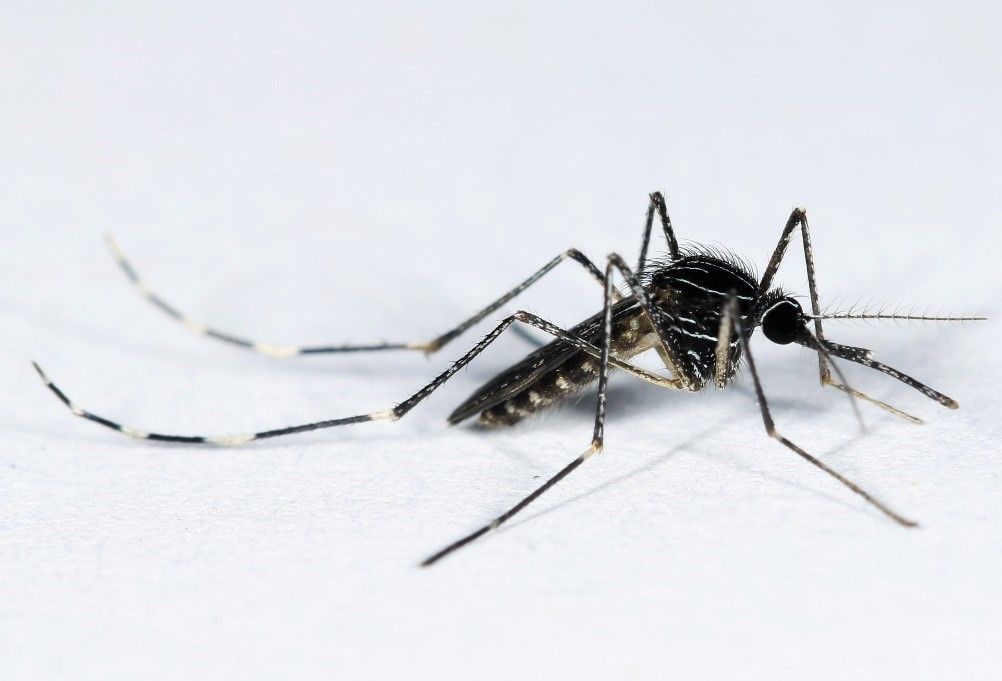
Credit: Kristin Sloyer, University of Texas Medical Branch
Synonymy
Culex signifer Coquillett, 1896
Orthopodomyia californica Bohart, 1950 (ITIS 2023)
Distribution
The ornate tree hole mosquito has a wide-ranging Nearctic distribution. Orthopodomyia signifera’s distribution includes Cuba, Dominican Republic, Mexico, Puerto Rico, the continental United States, Canada and Jamaica (Horsfall 1955, Zavortink 1968, ECCC 2017, GBIF 2023; Figure 2). In the continental United States, Orthopodomyia signifera is found throughout eastern states and in scattered locations throughout the west (Burkett-Cadena 2013; Figure 3).
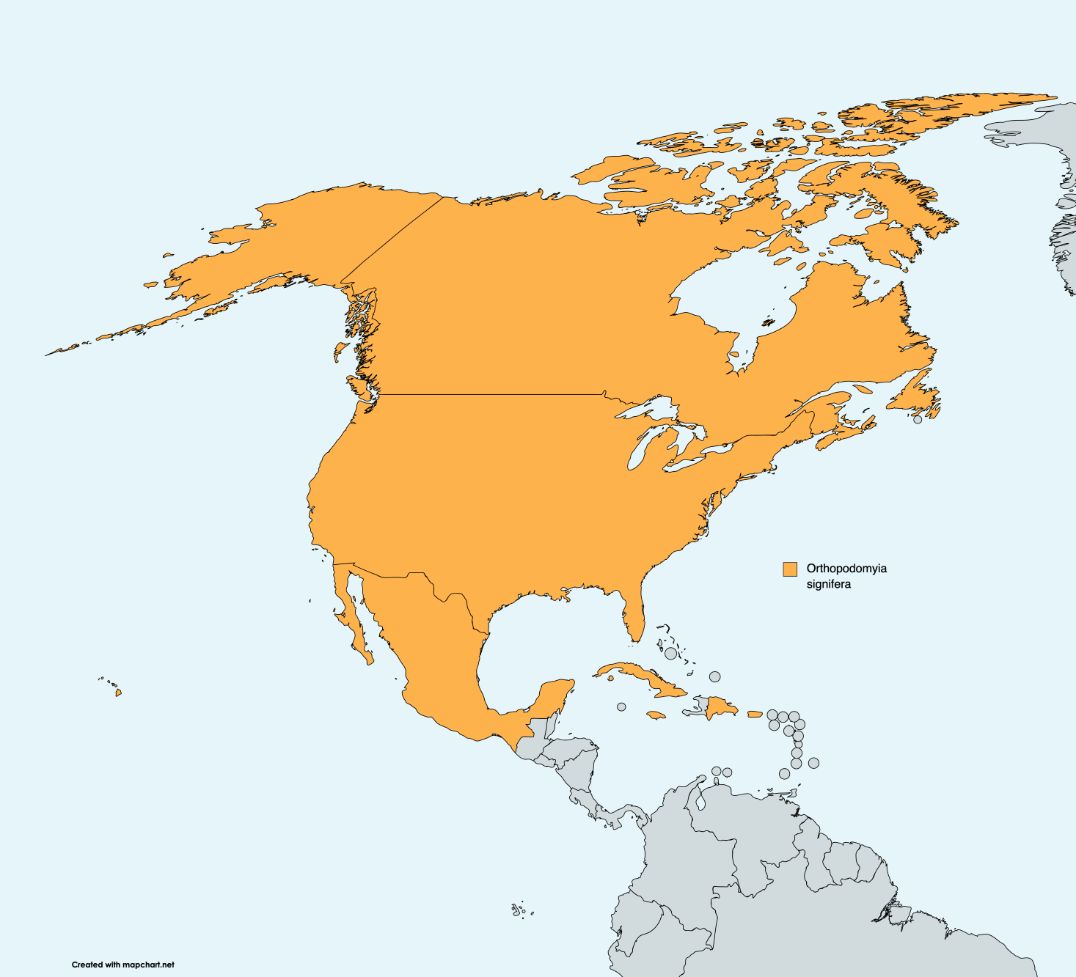
Credit: Map created with mapchart.net by Leigh Ketelsen, University of Florida, using information from Horsfall (1955), Zavortink (1968), ECCC (2017), and GBIF (2023)
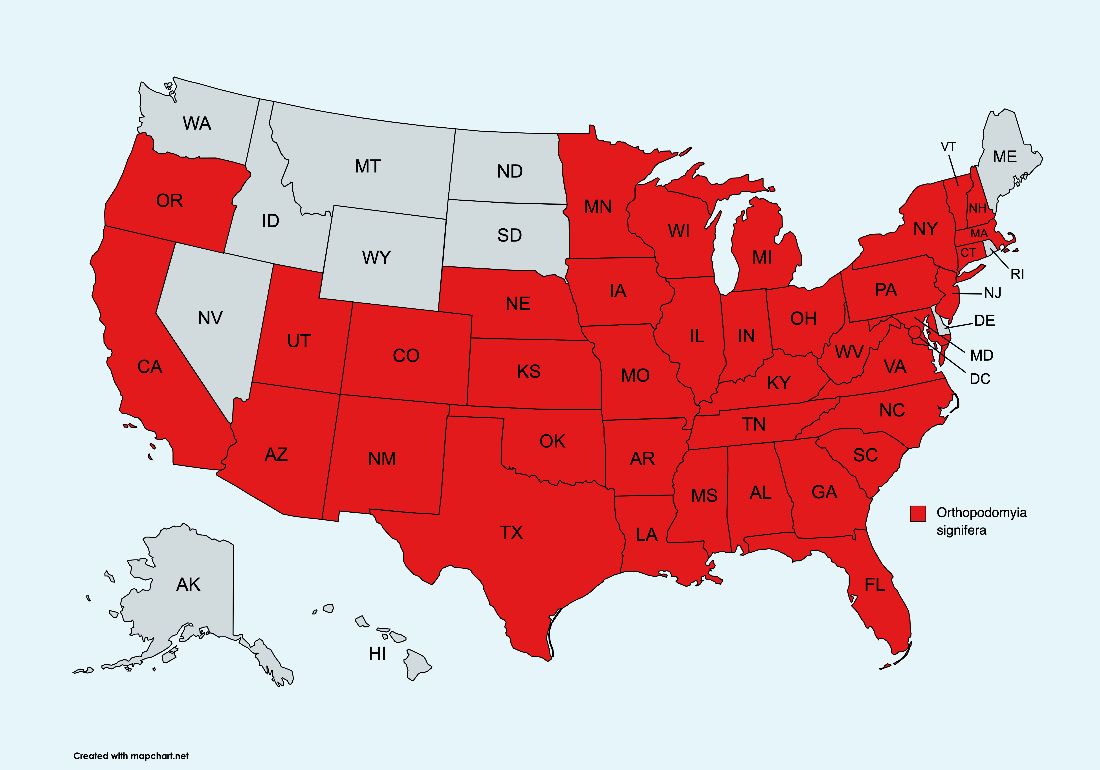
Credit: Map created with mapchart.net by Leigh Ketelsen, University of Florida, using Burkett-Cadena (2013). https://creativecommons.org/licenses/by-sa/4.0/
Description
Eggs
Orthopodomyia signifera’s eggs are slender-shaped, equipped with a pair of longitudinal membranous flanges, and have a ratio of diameter to length measurements greater than 1:2 (Ross and Horsfall 1965).
Larvae
In general, Orthopodomyia signifera larvae are medium sized. The thorax and abdomen are reddish orange dorsally, but pale ventrally, and the head and respiratory siphon are dark black in color (Burkett-Cadena 2013; Figure 4). The respiratory siphon possesses a hair tuft with five to seven branches located approximately half-way down its length (Figure 5A) but is without pecten spines. The eighth abdominal segment, which bears the respiratory siphon, is characterized by the presence of a large, sclerotized plate and two rows of comb scales laterally on either side (Figures 5B-5C). The large, sclerotized plate frequently extends to the margin of the comb scales (Carpenter and LaCasse 1955, Wilmot et al. 1992). For Orthopodomyia signifera, the anal gills, which are paired structures on the anal segment at the end of the larval abdomen, vary in length so that the dorsal pair is longer than the ventral pair (Figure 5D).
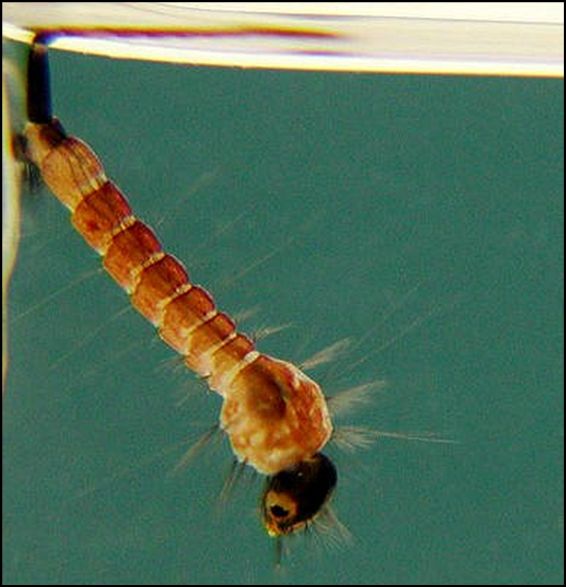
Credit: Michele M. Cutwa, University of Florida

Credit: Michele M. Cutwa, University of Florida
Pupae
Like all mosquito pupae, Orthopodomyia signifera pupae are composed of two body regions, the cephalothorax and abdomen, and are comma-shaped (Figure 6). Pupae rest at the water surface and breathe through two short tubes called respiratory trumpets located dorsally on the cephalothorax.
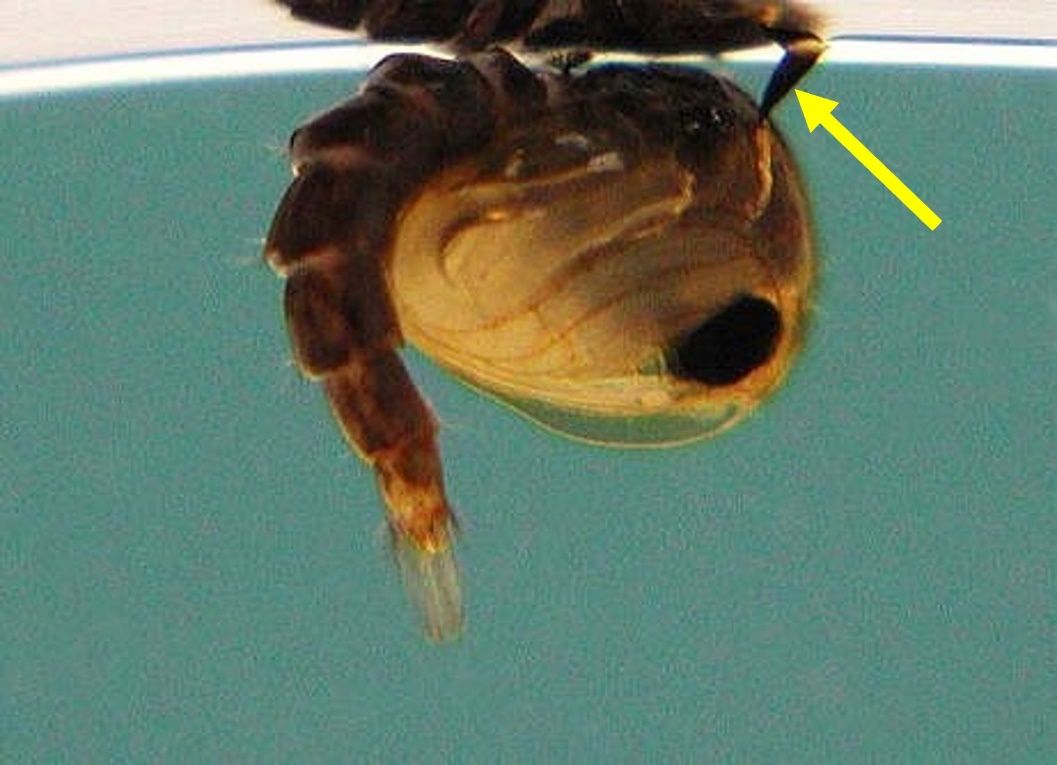
Credit: Michele M. Cutwa, University of Florida
Adults
Adult mosquitoes in the genus Orthopodomyia can be distinguished from other genera by comparing the lengths of tarsal segments (also called tarsomeres) on the foreleg. Unique to Orthopodomyia adults, the fourth tarsomere is shorter than the fifth (Burkett-Cadena 2013). The ornate tree hole mosquito, Orthopodomyia signifera, is a medium to large sized species with a black body that is highlighted by contrasting bright white scales (Figure 7). The scale pattern on the scutum, or the dorsal side of the thorax, consists of a black background with thin longitudinal lines of white scales (Andreadis et al. 2005; Figure 8A). The sides of the thorax are dark colored with patches and lines composed of narrow white scales (Figure 8B). Orthopodomyia signifera wings are speckled with broad black and white scales (Figure 8C). On the head, the occiput (area behind eyes) has oval-shaped white scales, while the palps and proboscis are mostly dark with some white scales (Figure 8D). The hind legs have broad white bands crossing the junction of the tarsal segments (Burkett-Cadena 2013; Figure 8E).

Credit: Michele M. Cutwa, University of Florida
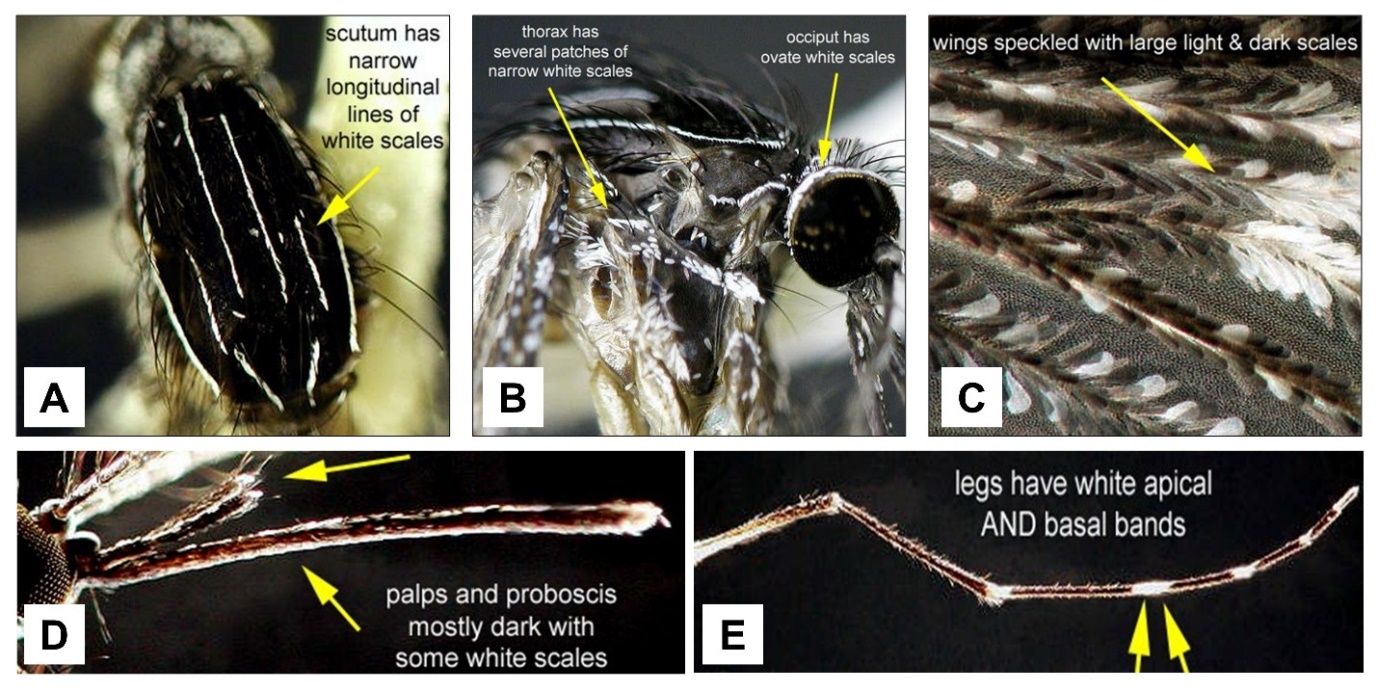
Credit: Michele M. Cutwa, University of Florida
Life Cycle and Biology
Mosquitoes are holometabolous, meaning that they undergo complete metamorphosis. Their life cycle consists of the four distinct stages of egg, larva, pupa, and adult. Like many other mosquitoes, Orthopodomyia signifera is a multivoltine species and produces two or more generations per year. However, according to Crans (2004), mosquitoes with the Orthopodomyia signifera type life cycle are unique from other multivoltine mosquito species because they utilize natural and artificial container habitats for immature development, possess non-desiccation resistant eggs, and overwinter in the larval stage instead of egg or adult in cold areas such as the northeastern U.S. Orthopodomyia signifera and three other mosquito species, Orthopodomyia alba, Anopheles barberi, and Toxorhynchites rutilus septentrionalis, are the only ones known to exhibit this unique life cycle type.
Eggs
Orthopodomyia signifera eggs are non-desiccation resistant and are laid singly or in very small numbers either directly on the surface of the water or just above the waterline along the walls of water-holding containers or cavities (Dyar and Knab 1906, Howard et al. 1917, Horsfall 1955, Crans 2004). During the summer, eggs hatch after two to three days of incubation (Horsfall 1955).
Larvae
Once hatched, mosquitoes spend the rest of their immature life stages (four larval instars and pupae) in aquatic environments. True to its common name of the ornate tree hole mosquito, Orthopodomyia signifera is container-inhabiting and primarily utilizes tree holes and other natural water-holding containers like bamboo stems and bromeliads for immature development. Though, Orthopodomyia signifera larvae can also be found in artificial water-holding containers such as trash cans and discarded tires (Hanson et al. 1995). Orthopodomyia signifera larvae can be found either alone or with other container-inhabiting mosquitoes like Orthopodomyia alba, Aedes triseriatus, Anopheles barberi, and Toxorhynchites rutilus (Horsfall 1955).
Orthopodomyia signifera larvae are quiet filter feeders, which allows them to live in the same tree holes as the larval predator Toxorhynchites rutilus, commonly known as the elephant mosquito, but remain undetected (Bradshaw and Holzapfel 1983). Orthopodomyia signifera overwinter as larvae, which are tolerant of cold but unable to withstand freezing like Orthopodomyia alba larvae (Copeland and Craig 1990, Wilmot et al. 1992). Orthopodomyia signifera larvae overwintering in tree holes are more likely to survive cold temperatures than their counterparts overwintering in artificial containers, such as tires, due to the presence of more leaf litter and sediment at the bottom of tree holes as compared to at the bottom of tires. Larvae burrow into the sediment at the bottom of tree holes and are protected from freezing (Lake 1954, Crans 2004).
Pupae
Development from larval to adult mosquito occurs during the pupal stage. During the process of their last larval molt to the pupal phase, comma-shaped pupae lose the posterior respiratory siphon and instead breathe through two short tubes called respiratory trumpets, each of which connect to a spiracle in the cephalothorax. Mosquito pupae, also known as “tumblers”, are highly reactive to changes in light and environmental disturbances and dive for safety when disturbed. While this stage is quite active and reactive to their environment, mosquito pupae do not eat. The pupal stage of this species usually lasts two days.
Adults
Adult mosquitoes emerge from their pupal skin (exoskeleton) at the surface of the water. Both male and female adults feed on the nectar of flowers and other suitable sugar sources, but only females require a blood meal for egg production (AMCA 2023). Orthopodomyia signifera are known to take blood meals only from birds (Carpenter and LaCasse 1955).
Medical Significance
Orthopodomyia signifera is regarded as medically unimportant (Byrd et al. 2009), because this species is only known to take blood meals from birds, preventing potential transmission of any pathogens to humans. However, Orthopodomyia signifera could potentially play a role in the circulation of West Nile virus (WNV) and Eastern equine encephalitis virus (EEEV) between birds, because field collected Orthopodomyia signifera mosquitoes from North America have tested positive for WNV and EEEV (Vargas 1960, CDC 2017). Additionally, Chamberlain et al. (1954) found Orthopodomyia signifera to be a competent vector of EEEV and Western equine encephalitis virus (WEEV) in the laboratory. More studies are needed to determine if Orthopodomyia signifera is involved in the transmission of viruses between birds in nature (Byrd et al. 2009).
Management
Since Orthopodomyia signifera is not known to bite and transmit pathogens to humans, management of this mosquito species is not needed. However, Orthopodomyia signifera larvae may be exposed to management activities used as part of an integrated mosquito management (IMM) plan due to their co-habitation of water-filled cavities and containers with important public health mosquito species like Aedes triseriatus, Aedes aegypti, and Aedes albopictus. Integrated mosquito management is a comprehensive strategy that utilizes all available control methods to reduce the number of mosquitoes, prioritizing those methods that are more environmentally friendly.
Compared to adults, immature mosquitoes (larvae and pupae) can be easier to kill during their aquatic life stages because they require water to survive and remain confined to the water body where they hatched from eggs. For this reason, elimination of potential container habitats (source reduction) like buckets and improperly stored tires (Figure 9) and treatment of larval habitats that cannot be eliminated are heavily emphasized within IMM plans. Tips for source reduction and treatment of water-filled containers that can produce mosquitoes can be found in the Mosquitoes and their control: integrated pest management for mosquito reduction around homes and neighborhoods Ask IFAS publication.
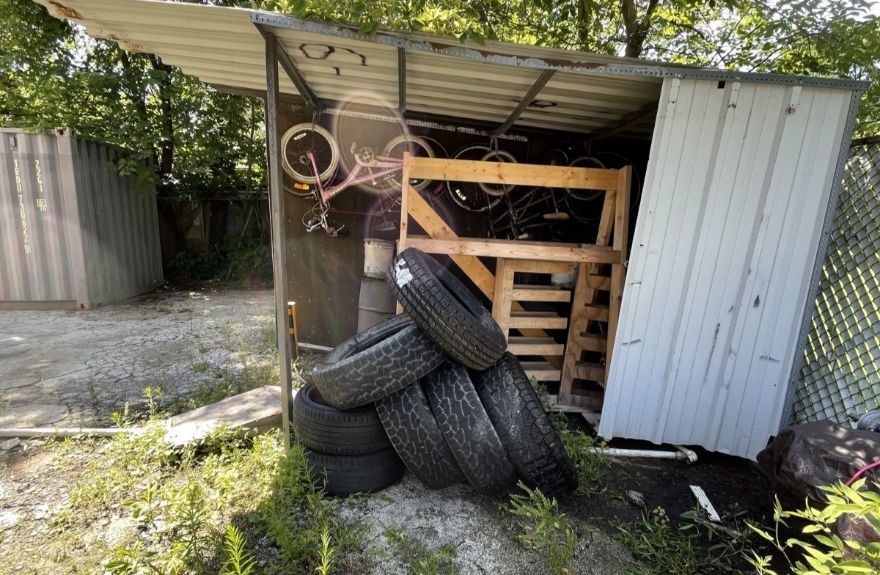
Credit: Leigh Ketelsen, University of Florida
Selected References
Andreadis TG, Thomas MC, Shepard JJ. 2005. Identification guide to the mosquitoes of Connecticut. The Connecticut Agricultural Experiment Station, New Haven, Connecticut. https://portal.ct.gov/-/media/CAES/DOCUMENTS/Publications/Bulletins/b966b996pdf.pdf. [Accessed 15 July 2022]
AMCA [American Mosquito Control Association]. 2023. Mosquito Biology. https://www.mosquito.org/mosquito-biology/. [accessed 10 June 2023]
Bradshaw WE, Holzapfel CM. 1983. Predator-mediated, non-equilibrium coexistence of tree-hole mosquitoes in southeastern North America. Oecologia 57: 239–256. https://doi.org/10.1007/BF00379586
Bradshaw WE, Holzapfel CM. 1984. Seasonal development of tree-hole mosquitoes (Diptera: Culicidae) and chaoborids in relation to weather and predation. Journal of Medical Entomology 21: 366-378. https://doi.org/10.1093/jmedent/21.4.366
Burkett-Cadena ND. 2013. Mosquitoes of the Southeastern United States. University of Alabama Press, Tuscaloosa, Alabama.
Byrd BD, Wesson DM, Harrison BA. 2009. Regional problems identifying the fourth instar larvae of Orthopodomyia signifera (Coquillett) and Orthopodomyia kummi Edwards (Diptera: Culicidae). Entomological Society of Washington 111: 752-754. https://doi.org/10.4289/0013-8797-111.3.752
Carpenter SJ, Lacasse WJ. 1955. Mosquitoes of North America north of Mexico. University of California Press, Berkeley, pp. 360. https://doi.org/10.1525/9780520325098
[CDC] Centers for Disease Control and Prevention 2017. ArboNet. Mosquito species in which West Nile virus has been detected, United States, 1999-2017. https://stacks.cdc.gov/view/cdc/46971. [Accessed 9 January 2024]
Chamberlain RW, Sikes RK, Nelson DB, Sudia WD. 1954. Studies on the North American arthropod-borne encephalitides. VI. Quantitative determinations of virus-vector relationships. American Journal of Hygiene 60: 278–285. https://doi.org/10.1093/oxfordjournals.aje.a119721
Copeland RS, Craig Jr GB. 1990. Habitat segregation among tree hole mosquitoes (Diptera: Culicidae) in the Great Lakes region of the United States. Annals of the Entomological Society of America 83: 1063-1073. https://doi.org/10.1093/aesa/83.6.1063
Crans WJ. 2004. A classification system for mosquito life cycles: Life cycle types for mosquitoes of the northeastern United States. Journal of Vector Ecology 29: 1-10. https://vectorbio.rutgers.edu/outreach/mosclassSOVE.php
Darsie Jr RF, Ward RA. 2005. Identification and geographical distribution of the mosquitoes of North America, north of Mexico. Gainesville, FL: University Press of Florida.
Dyar HG, Knab F. 1906. The larvae of Culicidae classified as independent organisms. Journal of the New York Entomological Society 14: 169-230, 242.
Environment and Climate Change Canada (ECCC). 2017. Species at risk public registry - Wild species 2010 - The general status of species in Canada. https://www.canada.ca/en/environment-climate-change/services/species-risk-public-registry/publications/wild-species-2010/chapter-18.html. [Accessed 3 December 2023]
Farajollahi A, Kesavaraju B, Nelder MP, Crans SC, Gaugler R. 2009. An unusual larval collection and survival of Orthopodomyia signifera in the presence of the predator Toxorhynchites rutilus septentrionalis. Journal of the American Mosquito Control Association 25: 370-373. https://doi.org/10.2987/09-5878.1
[GBIF] Global Biodiversity Information Facility. 2023. Orthopodomyia signifera (Coquillett, 1896). GBIF Backbone Taxonomy. Checklist dataset https://doi.org/10.15468/39omei. [Accessed 29 November 2023]
Hanson SM, Novak RJ, Lampman RL, Vodkin MH. 1995. Notes on the biology of Orthopodomyia in Illinois. Journal of the American Mosquito Control Association 11: 375-376.
Horsfall WR. 1955. Mosquitoes: their bionomics and relation to disease. Ronald Press. New York, NY.
Howard LO, Dyar HG, Knab F. 1917. The mosquitoes of North and Central America and the West Indies. Systematic description, part I. Carnegie Institution of Washington publication no. 159, 523 pp. https://doi.org/10.5962/bhl.title.54495
ITIS [Integrated Taxonomic Information System]. 2023. Orthopodomyia signifera (Coquillett, 1896). https://www.itis.gov/servlet/SingleRpt/SingleRpt?search_topic=TSN&search_value=126535#null. [Accessed 29 November 2023]
Jenkins DL, Carpenter SL. 1946. Ecology of the tree hole breeding mosquitoes of Nearctic North America. Entomological Monographs 16: 31-47. https://doi.org/10.2307/1943573
Lake RW. 1954. Some biological observations on tree hole mosquitoes in Passaic County, New Jersey. Proceedings of the New Jersey Mosquito Extermination Association 41: 193-97.
Ross HH. 1947. The mosquitoes of Illinois (Diptera, Culicidae). Illinois Natural History Survey Bulletin 24: 1-96. https://hdl.handle.net/2142/44821
Ross HH, Horsfall WR. 1965. A synopsis of the mosquitoes of Illinois (Diptera, Culicidae). Illinois Natural History Survey – Biological Notes, No. 52. https://medical-entomology.inhs.illinois.edu/files/2017/08/mosquitosILkey.pdf
Vargas L. 1960. Los mosquitoes de Sonora en relacion con el problems de encefalitis. Revista Mexicana de Medicina 40: 338-345.
WRBU [Walter Reed Biosystematics Unit]. 2021. Orthopodomyia genus page. http://wrbu.si.edu/vectorspecies/genera/orthopodomyia [Accessed 2 December 2023]
Wilmot TR, Zeller DS, Merritt RW. 1992. A key to container-breeding mosquitoes of Michigan (Diptera: Culicidae), with notes on their biology. The Great Lakes Entomologist volume 25. https://core.ac.uk/download/pdf/303862767.pdf https://doi.org/10.22543/0090-0222.1781
Zavortink TJ. 1968. Mosquito Studies (Diptera, Culicidae) - VIII. A prodrome of the genus Orthopodomyia. Contributions of the American Entomological Institute 3: 1-221.